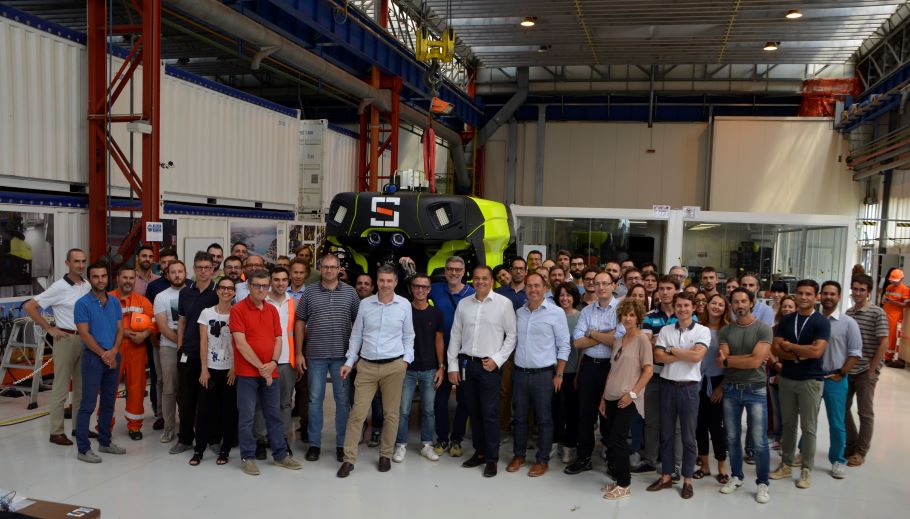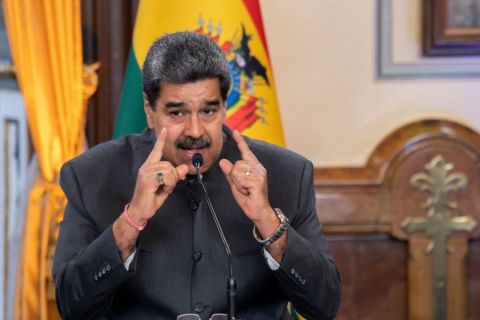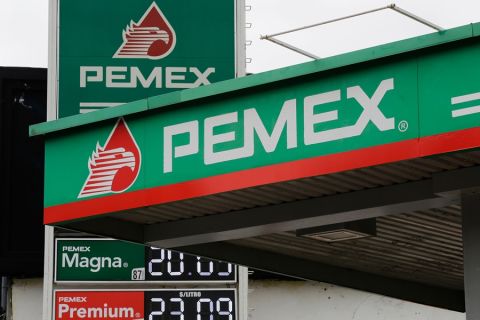Presented by:

Editor's note: This article appears in the special OTC edition of the E&P newsletter. Subscribe here.
Saipem's new Hydrone-R is a little robot with two arms and two big eyes specially equipped for working at the bottom of the sea.
The functions and operations connected with subsea assets are rapidly evolving to serve a much wider spectrum of needs and a higher level of complexity within subsea fields. Furthermore, vessel-based or diver operations, once the go-to modes for inspection, repair and maintenance, are no longer the safest nor most cost-effective solution.
The key to success lies in remote subsea operations, able to cope with the inspection, monitoring and maintenance of infrastructures.
Subsea robotics technology
Saipem's Hydrone Program, which launched in 2015, aims to constantly seek solutions that intelligently combine HSE excellence, industry demand, innovation and operational efficiency.
The Hydrone-R is an advanced hybrid ROV with AUV capabilities that can operate up to a depth of 3,000 m. Due to the embedded artificial intelligence features, it is capable of performing construction works as well as advanced autonomous inspections on a wide range of subsea assets.
Developed and engineered by Sonsub, Saipem’s center of excellence for subsea technology innovation, the Hydrone-R is part of Saipem’s Subsea Robotics Innovation Program, which was conceived to support remote, low-carbon and safe operations in the offshore energy market.
Hydrone-R is the first modular subsea resident intervention platform, directly integrated within the subsea field for long subsea dives without vessel support. The vehicle can remain underwater uninterrupted for up to 12 months, hosted on a subsea docking station, either proprietary or provided by the customer, for battery recharging and mission data uploading/downloading.
When set in resident mode, the hybrid ROV can be remotely supervised and operated from a remote control room onshore, leveraging on through-water communication links. As an alternative, it can work in fully autonomous mode within an intervention area of +10-km radius. Larger distances can be covered by introducing additional intermediate subsea docking stations.
Hydrone-R sets a new paradigm in the planning and execution of underwater inspections and light construction campaigns. A vessel-free execution scheme, along with the capability to be at the hot point where immediate checks, diagnostics and, possibly, intervention are required, minimizes asset downtime and unlocks a new frontier for less costly and more environmentally friendly supervision and operation of in-service subsea assets.
In 2019 Hydrone-R was chosen by Equinor to be the first underwater intervention drone commercially deployed in the Njord Field development offshore Norway, thus being the first worldwide service contract for subsea drones signed in the offshore energy industry.
Recognition from industry
This year Hydrone-R was conferred the Spotlight on New Technology Award by the Offshore Technology Conference. The winning technology reiterates the essential role this new generation of innovative subsea drones are called to play in this global transitional moment for the offshore energy market.

Giulio Fatica, head of subsea engineering and technologies with Saipem E&C Offshore Division, said, “Saipem is constantly developing transformative innovation solutions to improve our operating performances and reduce environmental impact. This is why we are especially proud that our Hydrone-R has received the Spotlight on New Technology Award this year. The Hydrone program is Saipem’s answer to the demand by operators for cutting-edge systems to assist during the life of complex subsea fields as well as helping to reduce vessel costs and the overall carbon footprint."
Recommended Reading
US Orders Most Companies to Wind Down Operations in Venezuela by May
2024-04-17 - The U.S. Office of Foreign Assets Control issued a new license related to Venezuela that gives companies until the end of May to wind down operations following a lack of progress on national elections.
EU Expected to Sue Germany Over Gas Tariff, Sources Say
2024-04-17 - The German tariff is a legacy of the European energy crisis that peaked in 2022 after Moscow slashed gas flows to Europe and an undersea explosion shut down the Nord Stream pipeline.
Pemex to Remain Fiscally Challenged for Mexico’s Next President
2024-04-16 - S&P Global Ratings said Pemex will remain a fiscal challenge for the country’s next president, adding that continued cautious macroeconomic management was key in its ratings on both Mexico and Pemex.
Yellen Expects Further Sanctions on Iran, Oil Exports Possible Target
2024-04-16 - U.S. Treasury Secretary Janet Yellen intends to hit Iran with new sanctions in coming days due to its unprecedented attack on Israel.


